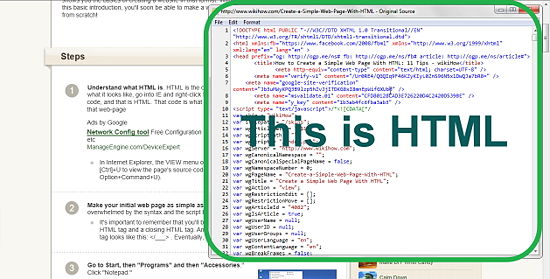How TO Make Web Pages
To make web runners, you need to have an introductory understanding of HTML( Hypertext Markup Language), CSS( Slinging Style wastes), and possibly some knowledge of JavaScript for interactivity. also is a step-by-step companion to get you started Plan your website Determine the purpose of your website and produce a rough sketch or wireframe of how you want your runners to be structured. Set up your development terrain Install a text editor or integrated development terrain( IDE) to write your law. If we want to take a good webpage.
Create a new HTML file:
Open your text editor and create a new file with a ".html" extension (e.g., "index.html"). Write the HTML structure: In the HTML file, start by adding the basic structure of a web page. Every HTML document should have a <!DOCTYPE html> declaration at the beginning followed by the <html> element, which contains the entire page content. Add head content: Within the <html> element, include the <head> element. Inside the <head>, you can add metadata, such as the title of your page, links to CSS files, or JavaScript libraries.
Style your web page with CSS:
To make your web page visually appealing, you can use CSS to add colors, fonts, layouts, and other styles. You can include CSS within a <style> tag in the <head> section or link an external CSS file using the <link> tag. Preview your web page: Save your HTML file and open it in a web browser to see how it looks. Make adjustments to the HTML and CSS as needed until you're satisfied with the layout. Enhance with JavaScript (optional): If you want to add interactivity or dynamic behavior to your web page, you can use JavaScript. You can include JavaScript code within <script> tags in the <head> or <body> section, or link an external JavaScript file using the <script> tag.
Build additional pages:
Once you're happy with your main page, you can create additional HTML files for other pages on your website. Ensure consistency in navigation and design across your pages. Publish your website: To make your website accessible to others, you'll need to host it on a web server. You can choose from various hosting options, such as shared hosting, virtual private servers (VPS), or cloud hosting. This guide provides a basic overview of creating web pages. As you progress, you can explore more advanced HTML, CSS, and JavaScript concepts to enhance your web development skills. Remember to refer to official documentation and online resources for detailed information on each topic.







.webp)






0 Comments